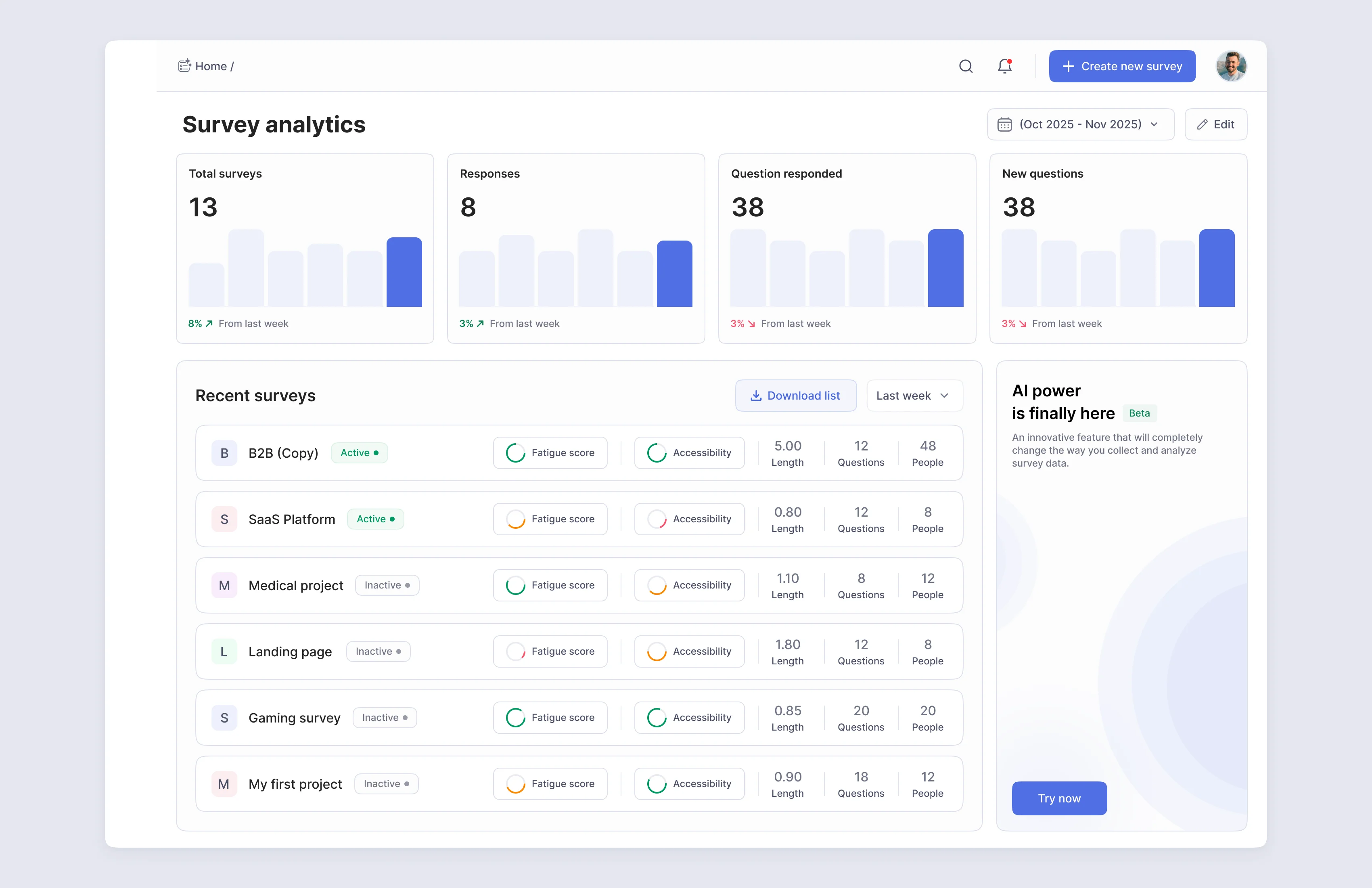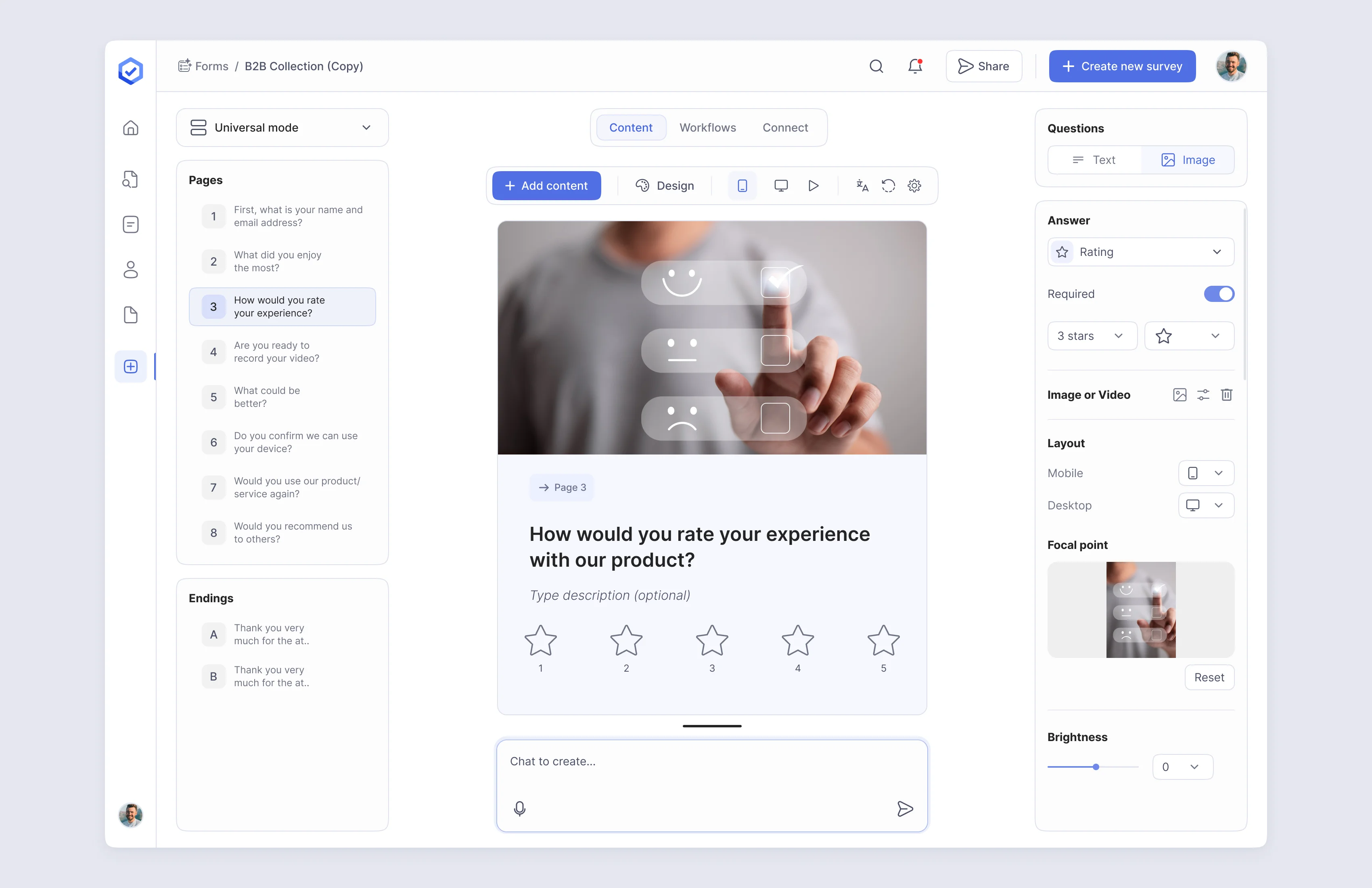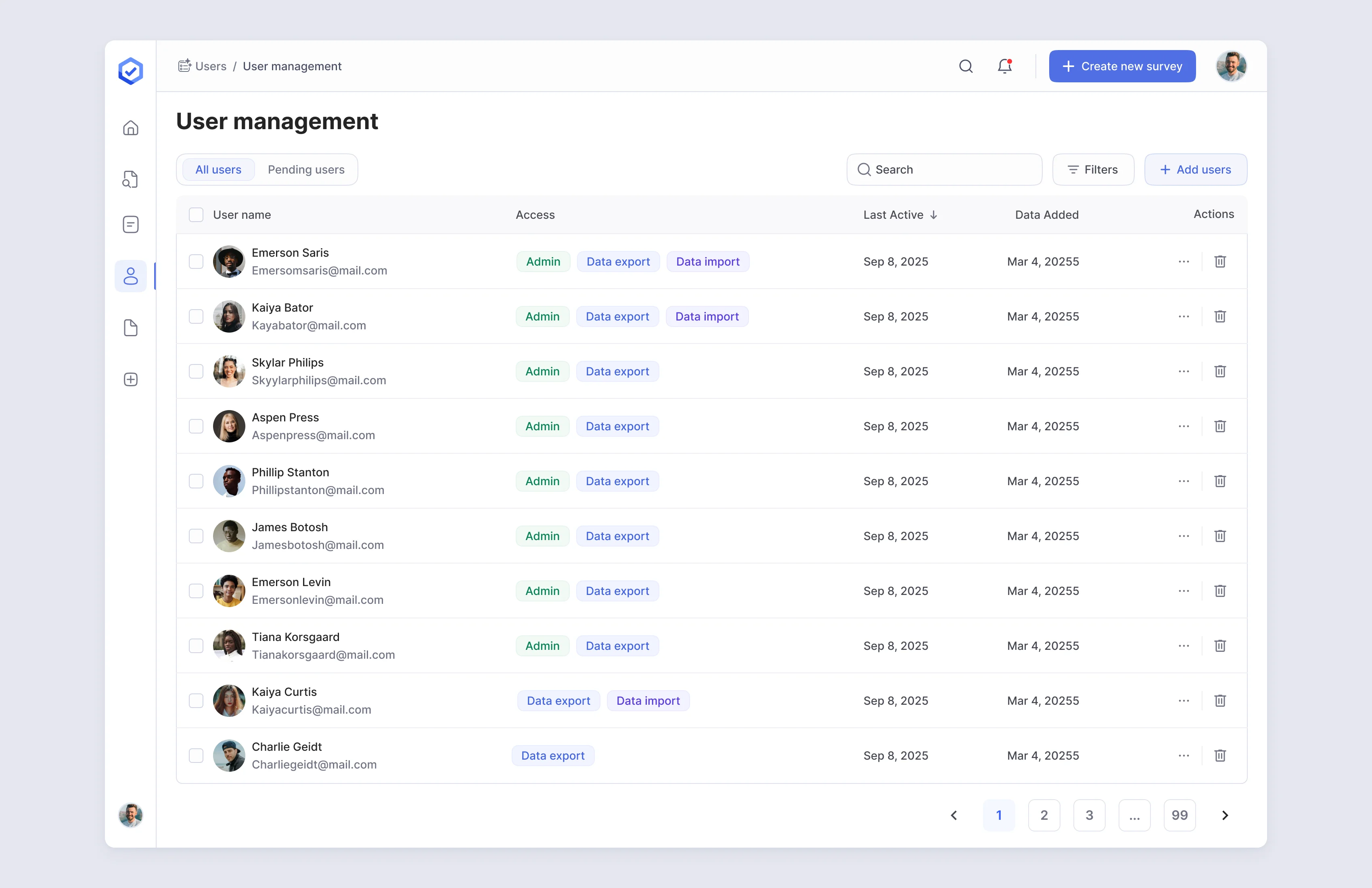Monolithic PHP Platform Modernization



Emerline performed a comprehensive architectural modernization of a decade-old monolithic PHP platform, successfully transitioning it to a hybrid PHP 8.3/Laravel service-oriented model to enhance performance, reduce technical debt, and enable a foundation for future AI and integration capabilities.

Client & Background
The client is a large international company providing a B2B platform for survey creation, feedback analytics, and user data management. The solution is used by corporate customers worldwide and serves as the core for a wide range of related services and integrations.
The client’s core application was a monolithic PHP platform (Zend Framework 1) that had been evolving for over a decade. Over time, it accumulated a substantial amount of tightly coupled components, legacy code, and outdated dependencies that no longer met modern development standards.
Although stable and functionally rich, the architecture had become outdated, limiting the pace of innovation, new integrations, and UI improvements. Incompatibilities with newer PHP versions and the complexity of the internal structure increasingly constrained maintenance and feature delivery.
The company identified the need for a comprehensive modernization of its platform to:
- improve performance and overall system resilience;
- reduce technical debt;
- ensure compatibility with modern PHP versions and best development practices;
- establish a foundation for gradual migration toward a modular, service-oriented architecture.
The existing infrastructure could no longer keep up with the company’s business growth and integration requirements for modern analytics, automation, and AI-driven tools. These discrepancies led to a strategic decision to rethink the architecture and modernize the Core Domain, while preserving core business logic and ensuring uninterrupted service for customers.
Challenge
Technical obsolescence and monolithic architecture
Accumulated technical debt and high maintenance costs
Integration and scalability limitations
Limited compatibility and dependency on outdated technologies
Low transparency and lack of architectural boundaries
Lack of architectural flexibility for transition to microservices
Methodology
The project was executed using an integrated Agile methodology based on Scrum, specifically adapted to the complexity of a large-scale enterprise platform with tightly coupled modules. The primary focus was on architectural transparency, iterative value delivery, and continuous feedback between the development, analytics, and architecture teams. A distinctive aspect of this project was that the modernization team operated in parallel alongside the client’s main product team, which continued to develop the existing platform. This approach enabled deep refactoring and the implementation of new services without disrupting business operations or freezing the main development branch.
Solution
The project resulted in a hybrid architecture that combines the stability of the existing monolith with the flexibility of modern service-based solutions. This approach preserved the core business logic and accumulated data while establishing a solid foundation for a gradual transition toward a fully modular, service-oriented ecosystem.
Modernized core platform
The core application was upgraded to PHP 8.3, followed by an extensive code refactoring and optimization of critical components. Outdated dependencies were replaced with supported alternatives, unified coding and logging standards were introduced, and data structures and responsibility boundaries between modules were clearly defined. These changes improved system stability and significantly simplified ongoing maintenance.

Modular architecture and decomposition
The monolith was restructured and divided into several independent services, each responsible for a specific business domain. The remaining core system was transformed into a modular architecture with clearly defined boundaries and communication interfaces. This made it possible to isolate business logic, reduce interdependencies, and enable independent evolution and scaling of individual modules.

Development and integration of new services
Functional areas that required greater flexibility were implemented as independent services built on modern frameworks. This structure accelerated the delivery of new functionality and laid the groundwork for a gradual transition to a distributed architecture.

Centralized configuration and standardization
Unified principles for configuration management, API standards, error handling, and environment setup were implemented across all components to ensure consistency and standardization. This ensured consistent system behavior and simplified maintenance across environments and deployment stages.

Enhanced development efficiency and code quality
The modular architecture and new automation tools made the development process for business features faster and more predictable. Automated testing and increased test coverage improved reliability and reduced regression effort. Teams gained the ability to develop and deploy new functionality in parallel without module conflicts, significantly accelerating the development, testing, and release cycle and increasing overall product delivery speed.

Technology Stack
The updated solution is built around a modern PHP stack that combines the proven stability of the refactored Zend Framework 1 core with the flexibility of new Laravel-based services. This hybrid setup provides a maintainable foundation, accelerates the delivery of business features, and opens a clear path toward a modular, service-oriented architecture.
Results
The implementation of the modernization initiative became a key milestone in the platform’s technological evolution, fundamentally transforming the company’s approach to product development and scalability. The transition from a monolithic to a modular and service-oriented architecture brought new levels of stability, flexibility, and agility in delivering business functionality without compromising system reliability.
- Accelerated development and faster feature delivery
By restructuring the system into independent modules and services, the development process became more predictable and manageable. Teams gained the ability to work in parallel across multiple domains, enabling faster delivery of new business features, more frequent releases, and quicker adaptation to market needs.
- Reduced technical debt and simplified maintenance
Comprehensive core refactoring and migration to modern PHP standards streamlined the entire maintenance process, resulting in a more efficient and reliable system. The updated architecture reduced interdependencies, improved code readability and testability, and minimized risks during change implementation.
- Improved performance and data processing efficiency
One of the most tangible outcomes of the modernization was a significant increase in overall system performance. The updated architecture optimized internal data processing and communication between services, resulting in faster execution of requests and noticeably reduced interface response times. Operations that previously required several seconds of waiting are now performed almost instantly. As a result, the platform’s overall throughput has increased — reports are generated faster, data analysis is more responsive, and background processes run more efficiently. Users have noted that working with the system has become considerably easier and more comfortable — the platform now feels faster, more stable, and more reliable in daily use.
- Improved product quality and stability
The introduction of automated testing and standardized integration processes enhanced quality control and reduced the number of issues in production releases. The platform became more predictable, resilient, and capable of continuous evolution without sacrificing stability.
- Foundation for future transformation
The new hybrid architecture established a strong foundation for the gradual transition toward a fully service-oriented model. Unified standards, centralized configuration, and a modernized infrastructure now allow the company to expand its product capabilities more efficiently and securely.
- Stronger collaboration and alignment
Running modernization and product development in parallel improved process transparency, strengthened communication between engineering and business teams, and ensured shared alignment around long-term architectural goals.